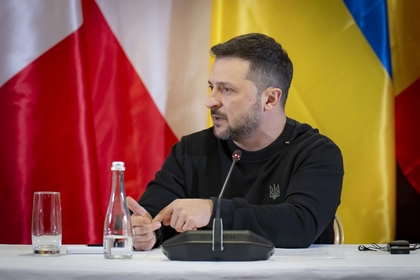Lots of figures are thrown around about the cost of supporting Ukraine in its defense against the Russian invasion. I have myself used a $100 billion a year price tag for keeping Ukraine in the war, and likely a $50 billion a year price tag to fund post-war reconstruction.
The Kiel Institute for the World Economy provides by far the best tracker of Western support for Ukraine. You can see it here.
JOIN US ON TELEGRAM
Follow our coverage of the war on the @Kyivpost_official.
I also combine this with Ukraine’s Ministry of Finance website which provides a tracker of budget support for Ukraine, which you can see here.
According to data from Kiel, total US and European support for Ukraine (military and budget/humanitarian) since the onset of the full-scale invasion until the end of February 2024 was €156.7 billion. In addition, Japan provided around €6 billion over this same period, and Canada around €5.4 billion. This would then put the total at over €168 billion. Of this total, around €67.1 billion had been provided by the US – and obviously this excluded the latest $61 billion support package for Ukraine approved by the US Congress in April 2024.
The €168 billion total excludes multilateral financing (IMF and World Bank, plus EIB) which, according to the Ukrainian MOF, amounted to around $11 billion for the period from the onset of the full-scale invasion to March 2024.
Note also that to plug holes left by the delay in US funding from the $61 billion package, which had originally been slated for last fall, the EU and other donors front-loaded some of their disbursements in Q124. The MOF hence reports over $8 billion in additional Western funds were directed to Ukraine in March 2024, including $4.8 billion from the EU (part of the €50 billion facility agreed at the EU council meeting in December to cover Ukraine to the period to 2027), an additional $1.2, billion from Japan and $1.5 billion from Canada and just over $0.5 billion from the UK.

Over 100K Ukrainians Return to Russian-Occupied Donbas as Economic Hardship Grows
€168 billion is around $180 billion in U.S. money, add in the $11 billion multilateral financing, and the $8 billion detailed above for March and that is already just over $199 billion in effect for 25 months. One could perhaps also add in the external debt service relief accrued to Ukraine of well over $10 billion also over this period.
Suffice to say the $100 billion figure of the annual cost of supporting Ukraine looks about par – not bad from my finger-in-the-air approach.
Notable though that the above figure is just to keep Ukraine in the war, and not actually ensuring victory – Ukraine is currently on the back foot so whatever we are doing is not enough. The West is only just providing Ukraine with enough funds to keep it in the war. In recent months Western financial support has ebbed and flowed. For the first six months of 2023, just prior to the Ukrainian counteroffensive, the West was funding Ukraine to the tune of $8.5 billion a month. That had, however, dropped back to just $3.7 billion per month in the period from October 2023 to February 2024, and no surprise then that Ukraine was then militarily on the back foot. The latter reduction in funding was again related to the fall off in US financing as funds were logjammed in Congress.
What seems to be evident then from the above is that the West needs to provide Ukraine with at least $100 billion a year to maintain the battlefield status quo. Less than this and Ukraine is pushed onto the back foot. I would then argue that to ensure positive forward momentum for Ukraine it likely will require Western financing of not less than $100 billion per year ($8 billion plus a month), but more likely closer to $150 billion (more like $12.5 billion per month).
The obvious question is what happens if Trump wins the US presidency in November, and then likely US financing for Ukraine falls off a cliff in 2025. This would risk funding to Ukraine dropping to closer to $50-60 billion per year. Would other Western allies be willing then to step in to cover the $40 billion per year plus financing shortfall from the US, and go beyond that to provide the additional $50 billion to take funding to the $150 billion mark. It seems unlikely.
Obviously $100-150 billion annually to support Ukraine sound like big numbers. But these have to be set against the costs of not supporting Ukraine and the costs of a Russian victory. Likely then NATO defense spending would need to increase not just to the current 2 percent of GDP target but close to the 3 percent plus of GDP spent during the Cold War era on defense. To put some numbers on that NATO’s European members are slated to meet the 2 percent of GDP target in 2024, which is expected to total $380 billion in combined defend spending in that year. Pushing that to 3 percent of GDP would add an additional $190 billion on annual defense spending in Europe. This number would double if the US joined Europe in increasing its defense spending by an additional 1 percent of GDP to account for the additional threat from a resurgent Russia, likely if it wins in Ukraine. Hence when we think of bang for buck here a $150 billion annual investment in Ukraine for just a few years to potentially save a recurring $400 billion plus additional spend if Ukraine loses looks like a very good investment by the West in its own security. Not sure if the ECB does cost benefit.
The views expressed are the author’s and not necessarily of Kyiv Post.
You can also highlight the text and press Ctrl + Enter






